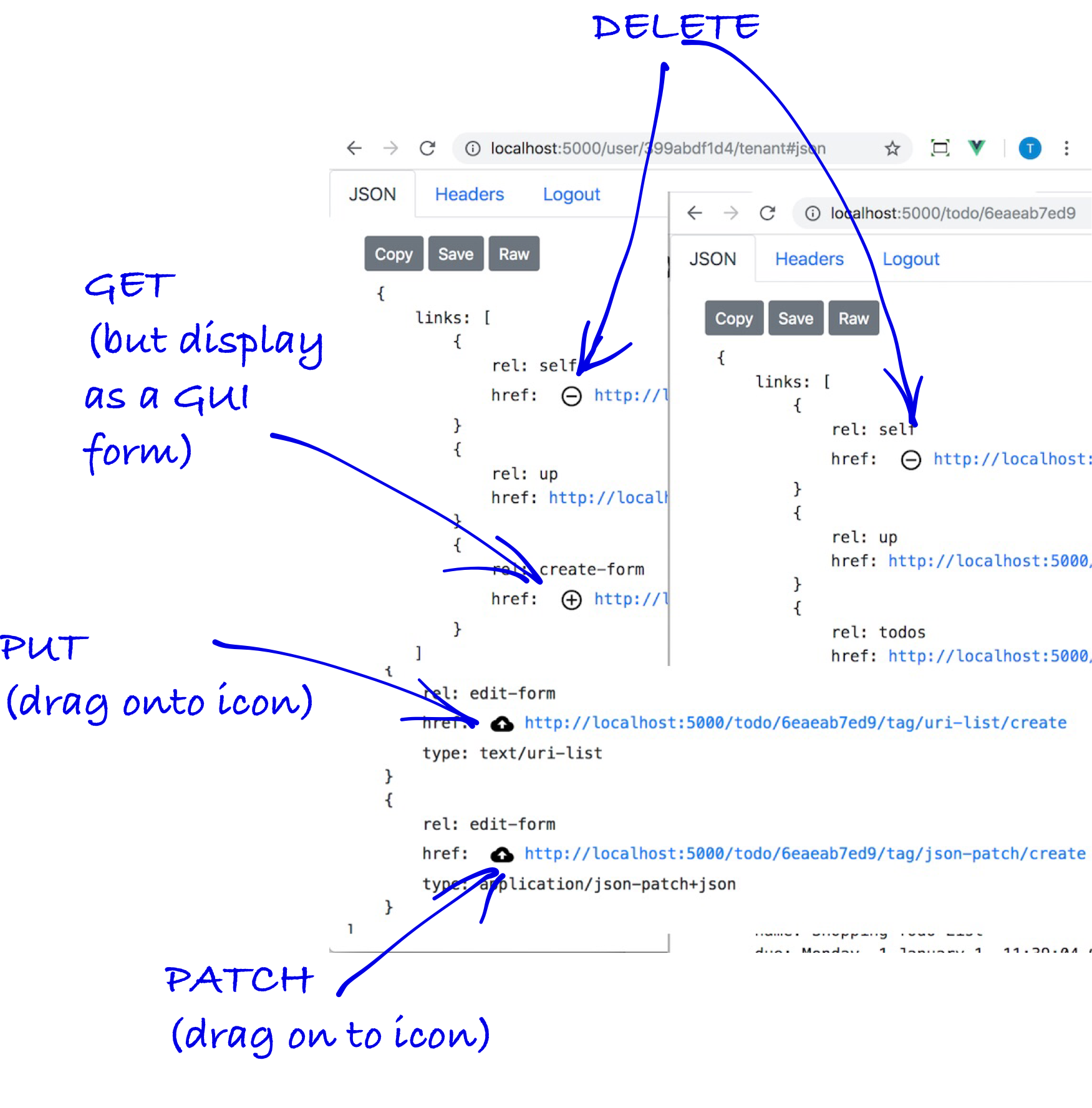Displaying with interaction
Once the across-the-wire representation (application/json) arrives, the API browser (in pretty print mode) creates an improved, human readable and interactable display. In short, URIs are made clickable, and and button are added to link relations are.
The purpose of this part of the tutorial isn’t to explain the HTML markup per se (you can look at the implementation and usage of third-party libraries). Rather it is to demonstrate how hypermedia makes it possible to have a generalised client.
The basic additions
Additions to link relations are:
selfhas a delete button (to perform DELETE)create-formloads up the a create form for values to be entered (to perform a POST)edit-formloads up the an edit form and includes the current representation values to be changed (to perform a PUT)edit-formwith a media typetext/uri-listcreates a drop target via HTML5 of a URI oruri-list(to perform a PUT of media typetext/uri-list)edit-formwith a media typeapplication/json-patch+jsoncreates a drop target via HTML5 of a URI oruri-list(to perform a PATCH of media typeapplication/json-patch+json)

Unlock the next chapter
A generalised client is all about
Avoiding having to write HTML to work with customers
Make the domain easily accessible early on for the team
Because it is the only way to do hypermedia
None of the above
Skip